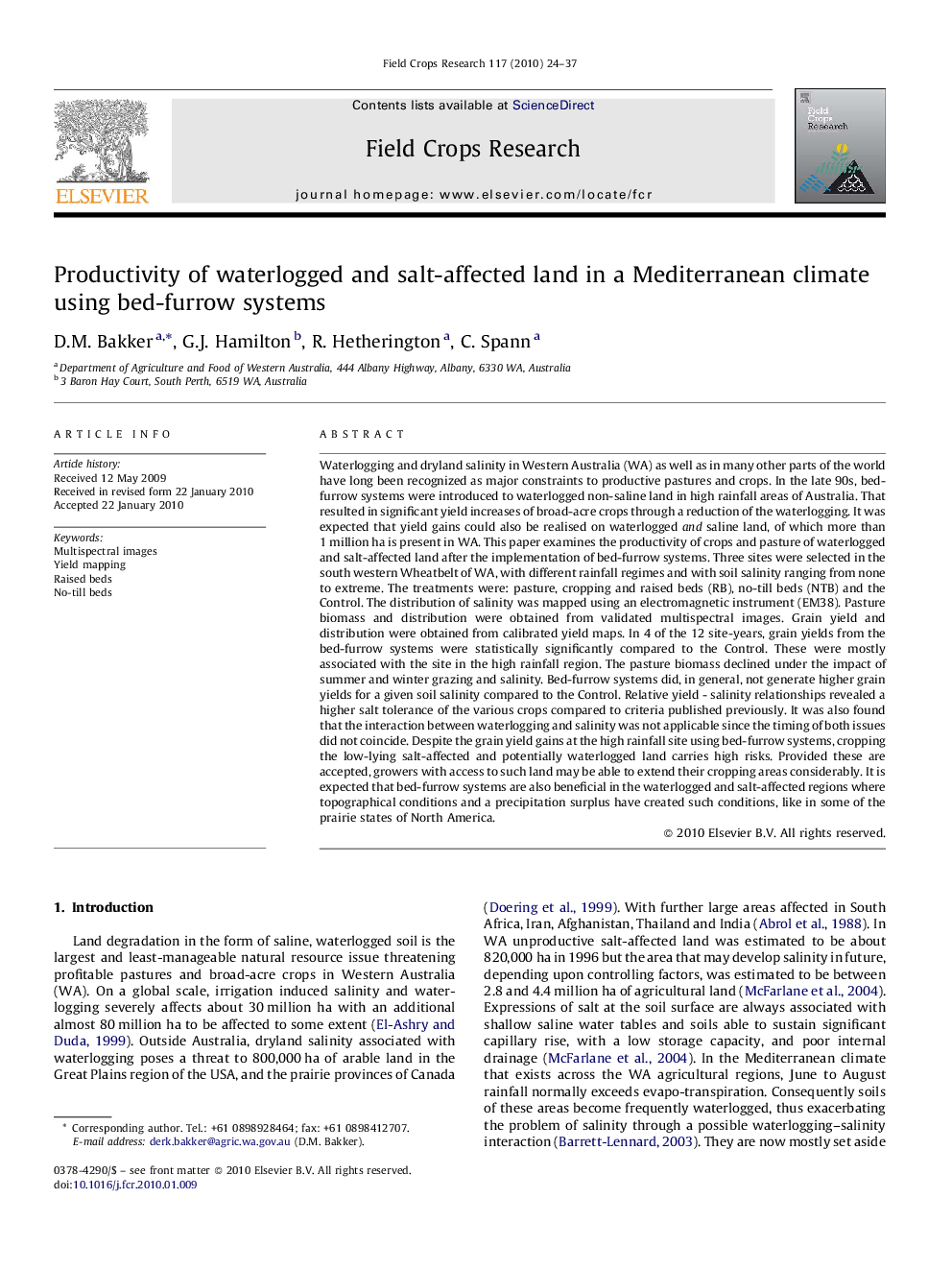| کد مقاله | کد نشریه | سال انتشار | مقاله انگلیسی | نسخه تمام متن |
|---|---|---|---|---|
| 4510998 | 1321886 | 2010 | 14 صفحه PDF | دانلود رایگان |

Waterlogging and dryland salinity in Western Australia (WA) as well as in many other parts of the world have long been recognized as major constraints to productive pastures and crops. In the late 90s, bed-furrow systems were introduced to waterlogged non-saline land in high rainfall areas of Australia. That resulted in significant yield increases of broad-acre crops through a reduction of the waterlogging. It was expected that yield gains could also be realised on waterlogged and saline land, of which more than 1 million ha is present in WA. This paper examines the productivity of crops and pasture of waterlogged and salt-affected land after the implementation of bed-furrow systems. Three sites were selected in the south western Wheatbelt of WA, with different rainfall regimes and with soil salinity ranging from none to extreme. The treatments were: pasture, cropping and raised beds (RB), no-till beds (NTB) and the Control. The distribution of salinity was mapped using an electromagnetic instrument (EM38). Pasture biomass and distribution were obtained from validated multispectral images. Grain yield and distribution were obtained from calibrated yield maps. In 4 of the 12 site-years, grain yields from the bed-furrow systems were statistically significantly compared to the Control. These were mostly associated with the site in the high rainfall region. The pasture biomass declined under the impact of summer and winter grazing and salinity. Bed-furrow systems did, in general, not generate higher grain yields for a given soil salinity compared to the Control. Relative yield - salinity relationships revealed a higher salt tolerance of the various crops compared to criteria published previously. It was also found that the interaction between waterlogging and salinity was not applicable since the timing of both issues did not coincide. Despite the grain yield gains at the high rainfall site using bed-furrow systems, cropping the low-lying salt-affected and potentially waterlogged land carries high risks. Provided these are accepted, growers with access to such land may be able to extend their cropping areas considerably. It is expected that bed-furrow systems are also beneficial in the waterlogged and salt-affected regions where topographical conditions and a precipitation surplus have created such conditions, like in some of the prairie states of North America.
Journal: Field Crops Research - Volume 117, Issue 1, 8 May 2010, Pages 24–37